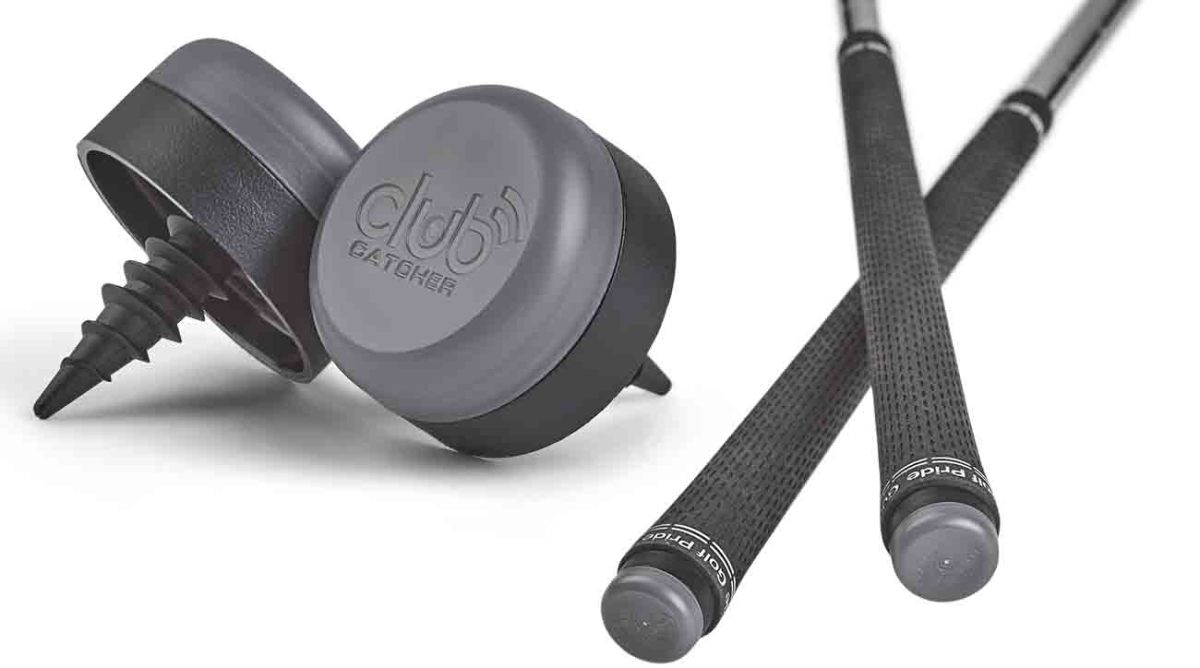Your Forgetfulness on the Course is Forgiven With Club Catcher

You don’t have to be a rocket scientist to remember not to leave a golf club behind after you finish putting and head to the next tee.
Or maybe you do. Because it took a rocket scientist to devise a technology that will prevent you from having such a brain-freeze moment and losing another golf club on a course. It's one that will allow you to follow the U.S. Marines vow: “No man left behind.”
The technology is called Club Catcher. The rocket scientist is Jesse Koenig. (Actually, he’s a satellite navigation engineer. But he did do work for NASA so that’s close enough for a little journalistic hyperbole.)

The idea is simple. Club Catcher sensors in your clubs work with an app on your phone (or watch) to give you a red-flag alert if you go to the next hole without those clubs being returned to your golf bag.
The execution of this simple idea isn’t simple at all. That’s why you need a rocket scientist—OK, aerospace engineer—like Koenig, who helped build satellites that varied from communication to missile-tracking to Earth observation. His job was to simulate and design the system that automatically steered the satellite, often by deducing its location from stars, so it could reposition itself as needed.
He drew on his satellite location expertise to make Club Catcher work because abandoned clubs, something every golfer has experienced, are among golf’s most annoying moments.
A member of a recent foursome I played with was stricken with a look of horror when we reached the 8th green. “I think I lost my sand wedge,” he said with a gasp. He couldn’t remember using it since a bunker shot at the 3rd hole.
We were rushing to get the second nine in before dark so going back to No. 3 at the turn wasn’t an option. He was distraught. After the round, I drove to that green, looked around and found nothing. By the time I returned, someone playing behind us had turned in the missing wedge. It was a story with a happy ending this time.
But if my playing associate had used Club Catcher, he would have gotten an alert that he’d left his wedge before he drove away from the 3rd green, been spared the angst of potentially losing a club forever and maybe saved a few shots on the back nine when he needed that wedge and didn’t have it.
Koenig went through the same problem in 2009, when he was working at a San Diego-based aerospace firm. “I’m not a good golfer at all, my friend and I just went out and had fun,” he said. “We might have had a couple of beers. We left clubs behind a lot. This one day, we played in a foursome with two guys we didn’t know. We told them what we did and that day, I left yet another club behind. One guy said, ‘You guys are engineers, why don’t you invent something to solve that?’ My friend and I looked at each other and said, Why don’t we?”
The idea was in the back of his mind for years and when the pandemic came along, Koenig decided to dive headfirst into creating Club Catcher. “In some ways, Club Catcher was harder than aerospace,” he said. “You work on something for NASA, you have one job, a very challenging job but you have all these other people building all these other systems and you’re just a piece of a larger puzzle. With Club Catcher, we were doing something nobody had done before and we had a much smaller team working on it.”
The beauty of Club Catcher is its ease of use. A golfer needs only a few basics to use it. One, purchase Club Catcher sensors (a package of four sells for $79—the most common lost clubs are putters, wedges or chipping irons left by greens) and download the Club Catcher app. Two, screw the Club Catcher sensors into the grips of those clubs (yes, Step Two is to screw yourself—now move along people, there’s nothing to see here) and pair them with your phone or watch. Three, take your phone or watch to the golf course and make sure its notifications sounds are turned on in case of a lost club alert. You should get notified of the missing club before you leave for the next tee.
Devising this simple operation wasn’t so simple. Part of what made Club Catcher so complicated was that if it was designed to alert you every time a club sensor moved out of Bluetooth range, it would cause multiple false alarms, like when your playing partner drove the cart (without you in it) across the fairway to play his ball.
So each club sensor needed to know when it was in or out of the bag. Solving that required the sensor to be light-activated. It’s always dark in the golf bag so when a club is pulled, light activates the sensor.
But with only a light sensor, a player could put his hand over the sensor unit or leave a club in the grass under a leaf or in dark shade or under a jacket, which would make it think it was back in the dark of the bag. Gravity proved to be another part of the solution. If the club is in the bag, the grip is in a vertical position, or close to it. By recognizing gravity from the angle of the club, and sensing light, the sensor would know whether a club is in the bag and if so, the sensor could go back to sleep.
“If it loses light, the sensor wonders, 'am I actually back in the bag?'” Koenig said. “We didn’t want it to be tricked. We used an accelerometer, which senses gravity and knows direction from that because gravity is always pulling down.”
That’s some of the science behind Club Catcher. All you need to know as a consumer is that it works.
“For as many times as I left a club behind, I always went back and found it but it messes up your experience,” Koenig said. “It’s just not as fun to play anymore that day. You go, ‘Sorry, guys, I’ve got to go back and get my club.’ I couldn’t stand that. For me, it was peace of mind. I’ve heard stories from people who lost a club, they don’t have a replacement that matches their other clubs so they end up buying a whole new set. This has been a problem since golf was invented.”
Now, a rocket scientist/satellite navigation engineer has a simple-to-use solution, Club Catcher ... provided you don’t lose your phone at the course, too.
